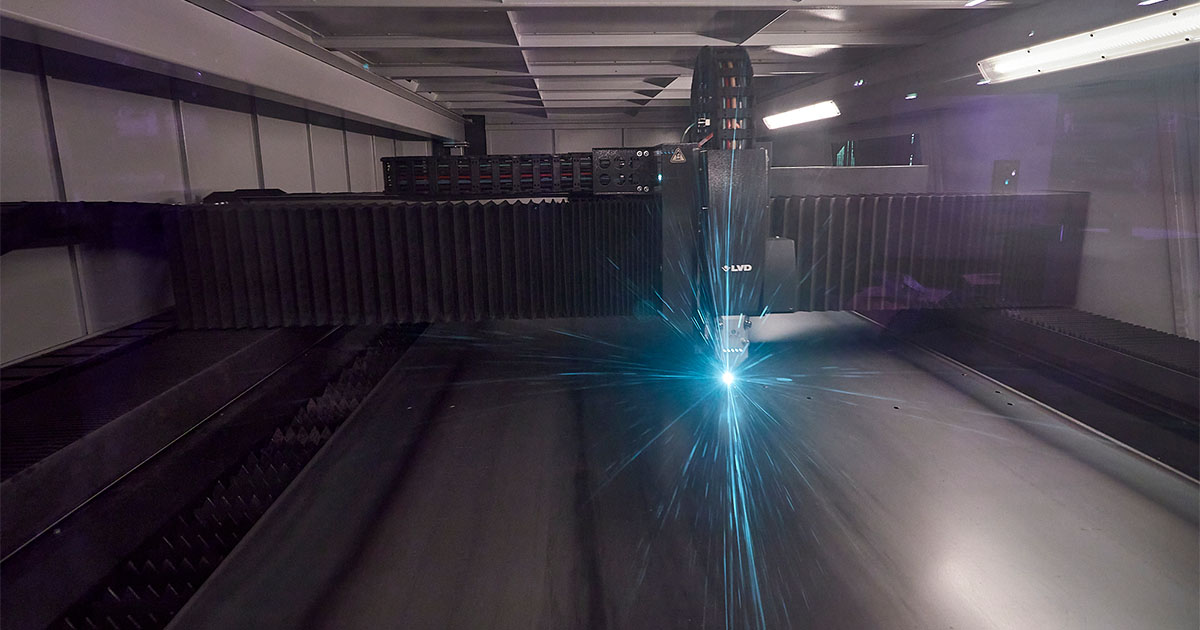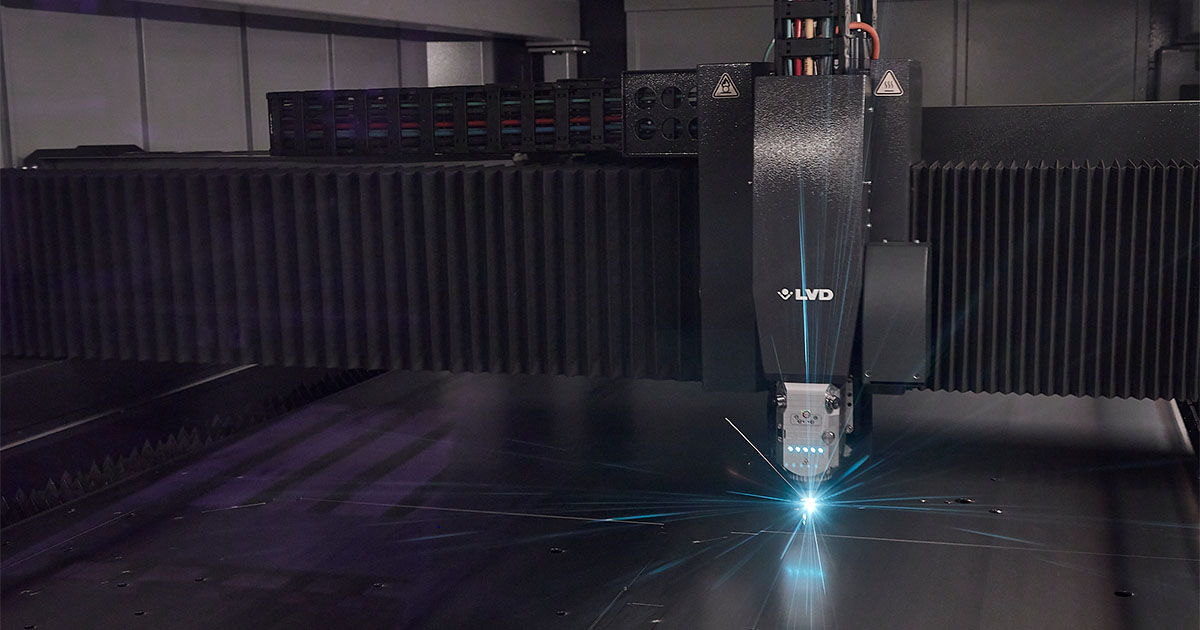
We collect basic website visitor information on this website and store it in cookies. We also utilize Google Analytics to track page view information to assist us in improving our website.
If you’re passionate about metal cutting or just keen to learn more, you’ve landed in the right place.
For over 38 years, Amber Steel has been at the forefront of metal cutting services, specializing in laser cutting, flame cutting, and plasma cutting. Our expertise has carved a niche in this cutting-edge industry, delivering precision and excellence across industrial projects big and small.
In our blog, we’ll share a mix of useful tips, innovative applications, our thoughts on sustainability in steel cutting, and more. Expect stories from the cutting floor, insights into how our processes can streamline projects across industries, and a few lessons we’ve learned along the way.
While we keep some of our trade secrets under wraps, this blog is designed to offer valuable nuggets of wisdom that you simply won't find anywhere else. Whether you’re a professional in the industry or someone fascinated by the possibilities of metal cutting, you'll find something of value here.
So, stick with us as we delve into the finer points of metal work. We’re glad to share our insights and lead discussions that matter to our industry.
How precision metal cutting propels the aerospace industry, from constructing lighter frames to enhancing aerodynamics.
The role of advanced metal cutting in automotive manufacturing, driving innovations in vehicle design and efficiency.
All about the robust and versatile process of flame cutting, ideal for tackling thicker metals with precision and ease.
Discover the art of crafting metal furniture, where cutting techniques meet design to create both functional and aesthetic pieces.
A behind-the-scenes look at the mechanics of metal cutting technologies and the science that makes them tick.
Laser cutting is where extreme precision meets efficiency, allowing for intricate designs and clean finishes.
The critical role of precise steel cutting in developing reliable and intricate medical devices.
How steel cutting supports the oil and gas industry with components that withstand extreme environments and pressures.
Known for its speed and versatility, plasma cutting slices through conductive metals with hot plasma.
Safety first! Tips and insights on maintaining a safe environment while handling powerful metal cutting equipment.
The backbone of construction, where steel fabrication and cutting technologies create frameworks that shape skylines.
Sustainability
A look at sustainability in metal cutting, focusing on practices that reduce waste and conserve energy to protect our planet.

An inRiver report surveyed 200 manufacturing businesses across the US, UK, and Germany, and explored the competitive landscape of manufacturing. What did it find? Close to 87% of respondents shared they are facing more competition than a year ago.
Combine this with a growing shortage of workers, and the manufacturing sector is facing incredible challenges.
A Deloitte and The Manufacturing Institute conducted a skills gap study in 2018, it revealed an estimated 2.4 million positions unfilled between 2018 and 2028. This could impact the economy by over 2 trillion dollars!
As we sit at the midpoint of that ten-year span, it is imperative for companies to find efficiencies, maximizing their technology, and take advantage of AI and automation in order keep their customer base happy.
In the world of industrial laser cutting operations, the margin for error is non-negotiable and the opportunities to improve efficiency are many.
In this blog post, we will be exploring some of the ways to improve efficiency in the laser cutting manufacturing sector and sharing how these changes will improve business productivity and profitability.
When optimally used, laser cutting is faster, has higher precision and lower operating costs. Let’s further explore some of its advantages:
Speed: Since laser cutting machines are automated, they produce more parts in less time, far surpassing the capability of traditional cutting methods. The results reduce lead times and increase efficiency.
Precision: Operated by computer software, laser cutters are programmed to cut materials within an acceptable accuracy range. Laser technology allows a focus of about 25 microns, roughly ¼ of the width of a strand of human hair. The cut width itself can be extremely small, slicing at less than 0.001 inches. The dimensional accuracy is also precise, at about ± 0.0005 inches.
Affordability: Compared to its traditional counterparts, laser cutting machines do not need as much maintenance and consume less energy. Both factors reduce operating costs and leave more money on the bottom line for profit.
Versatility: Laser cutters are versatile and can cut metal, plastics and composites, making them able to service a variety of industrial needs.
Before we can improve efficiency, we must first improve accuracy. Although laser cutting is a very precise art, there are still several areas where it could use support. Below we explore a number of ways in which accuracy could be improved:
Specific Material: The smoother and thinner the material, the more exact a cut you can achieve. Each material will also have specific machine settings.
Smaller Size Laser: The size of the laser beam spot can impact precision. By using a smaller laser beam spot size accuracy will improve over wider spot sizes.
Higher Power: The more powerful the laser beam is, the better it will perform when cutting through thicker materials for flawless, even cuts.
Optimized Workbench: The positioning of the workpiece material on the bench can impact the cut. Workbenches that are not stable can have vibrations, making the process lose its reliability to the original design.

Now that we have learned ways to improve accuracy, we can focus on improving efficiency. An efficient manufacturing practice is a more focused, safe and profitable one. Here are some of the ways laser cutting can be used to improve efficiency in its manufacturing sector:
Laser cutting is a two-part process: the actual cutting path and the separation path where the material is removed. The time consumed in the cutting path is the effective cutting time. The time used during the empty stroke or invalid path is called the invalid working time.
To improve cutting efficiency, the amount of time spent on the invalid path needs to be reduced, mainly by shortening the cutting path length. Different perforation methods will also help reduce the cutting process time.
Optimizing the cutting parameters will also decrease cutting time. Laser power and focal length both play a role here in addition to speed. The higher the laser power, the faster the cutting. The shorter the focal length, the more precise the cutting.
The materials you choose can also impact cutting time and efficiency. Some materials are more difficult to cut than others, increasing the time needed and therefore increasing operating costs. When cutting aluminum, you can achieve up to speeds of 5 m/min. While copper, is more difficult to cut, with cutting speeds of 2 m/min.
Finally, decreasing the cutting head lift will save cutting time and increase efficiency. By optimizing the cutting path of the cutting head or by using a micro-connection contour, you can remove the lifting motion of the cutting head. The laser will then move to the next cut position and capitalize on saved time.
No matter the business, waste is inevitable.
Both traditional cutting methods and the laser cutting process produce material waste. That being said, when companies invest in nesting software, part placement is optimized, and less waste is created. The laser cutter needs to be programmed to take advantage of every part from a single sheet of material.
When working with regular shaped parts, nesting will use the borrowing edge and the common edge. This will shorten the cutting path, reduce the cutting time, and minimize waste. A good rule of thumb is to use 2 to 4 parts as a group to share the edge. This can lessen actual cutting by 30% and improve material use by 8%.
It is equally important to consider choosing the proper raw material plates suited to the specific job. Smaller plates or non-standard size plates may work more efficiently reducing the total material waste.
Almost all manufacturing processes can benefit from the right setup. Whether it’s the workspace layout or communication practices amongst departments, improvements can be made to cut lead time and increase efficiency.
Take the time to analyze the workflow, identify bottlenecks and find wasted time in transit or waiting for further processing. Ensure incoming material is as nearest to the laser cutting machine and locate after-cutting processes as near as possible to the laser output.
Shop employees will have the most insights and input, as they are the ones in the thick of it. They are gold when it comes to improving efficiencies and fine-tuning processes. Utilize them and pick their brain for ways to become more efficient. Here are some sample questions they could be asked on a semi-regular basis.
Where do they think time is wasted?
How is production being slowed down?
Where can things be improved?
While not everyone is entirely impressed with the powers of Artificial Intelligence (AI), the manufacturing industry could greatly benefit from it. Especially laser-cutting machines.
At the start of this blog post, we mentioned a labour shortage of 23 million workers in manufacturing jobs. In this situation, AI and automation could help, by collaborating with its human counterparts during laser cutting jobs to increase production and quality.
To prove our point, MIT (Massachusetts Institute of Technology) researchers used machine learning (artificial intelligence) to create a laser cutter than can tell the difference between 30 different types of materials and improve the overall efficiency of the cutter.
AI can also help with adjustments to reduce waste and provide guidance for specific materials. There are laser cutting products hitting the market that already include AI features. For instance, this product automatically makes cut adjustments in milliseconds by adjusting the feed rate. While it may not be commonplace yet, AI is increasingly improving the manufacturing process across many industries, and the manufacturing industry should not be sleeping on if increased efficiency is their goal.
While laser cutting equipment generally has less maintenance requirements than some more traditional equipment, it still needs regular care and maintenance.
Regular maintenance will help prevent breakdowns, decrease downtime and keep the machine operating efficiently for longer. Daily inspections are a must for laser cutters to support proper performance. There are also important steps to take every six months or after 2,000 hours of use.
Consult the manufacturer’s recommendations for maintenance and be sure to perform regular inspections of all laser cutting equipment.
Maximizing efficiency in industrial laser cutting is essential due to growing competition and a labor shortage.
Improving accuracy through material selection and optimizing laser parameters is crucial.
Efficiency can be enhanced by reducing cutting time, minimizing waste, reconfiguring workflows, and utilizing AI. Regular maintenance is vital for machine longevity and performance. Embracing these strategies empowers manufacturers to stay competitive and profitable in the market.